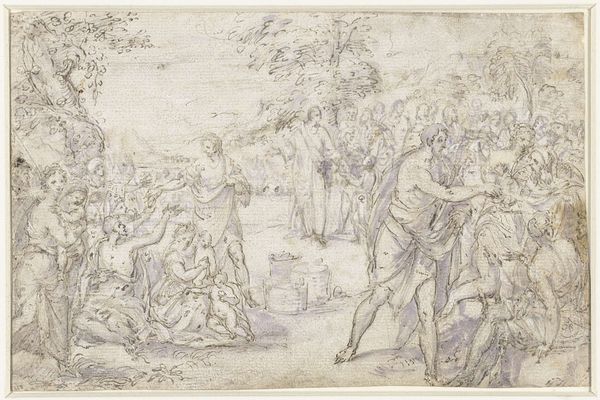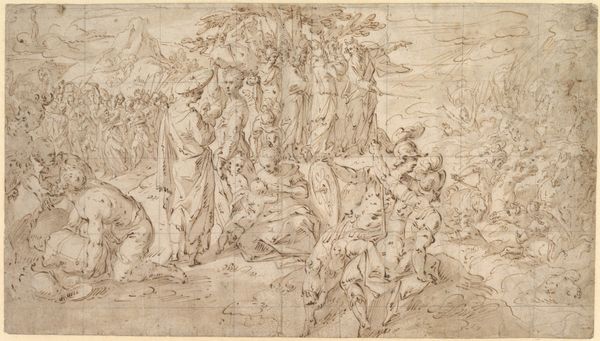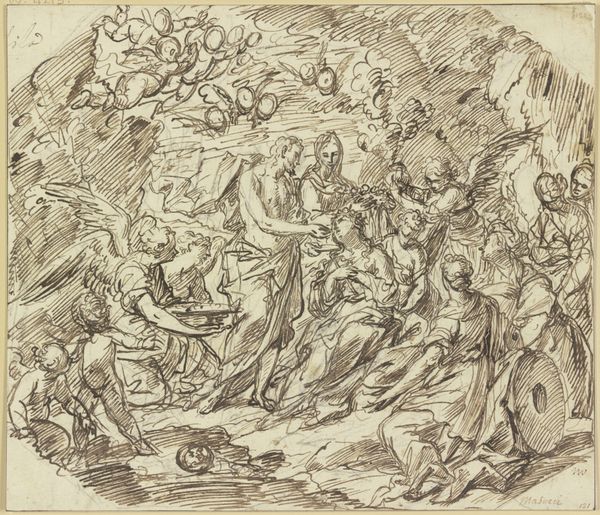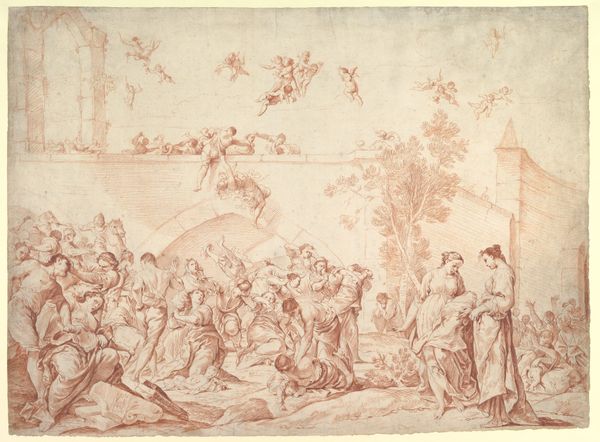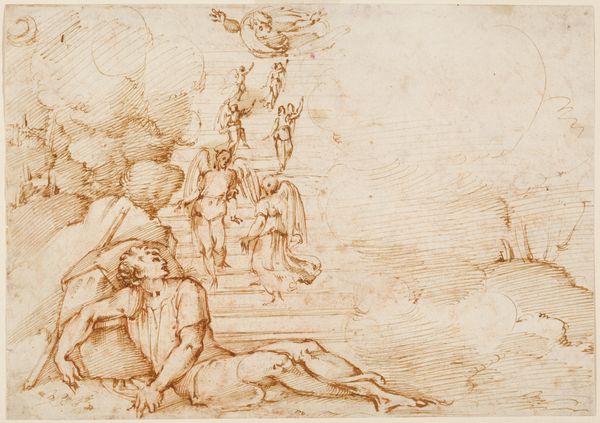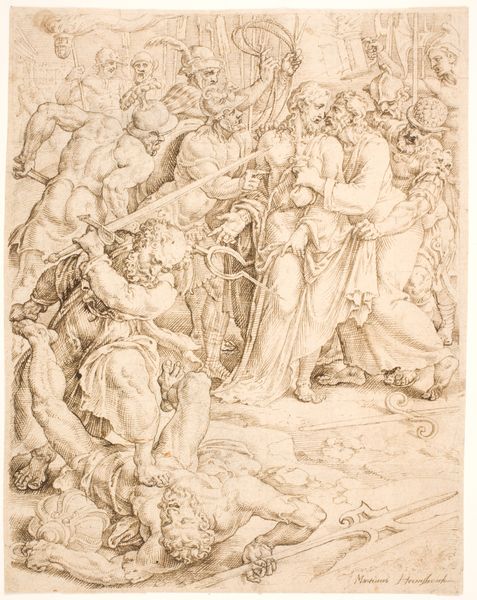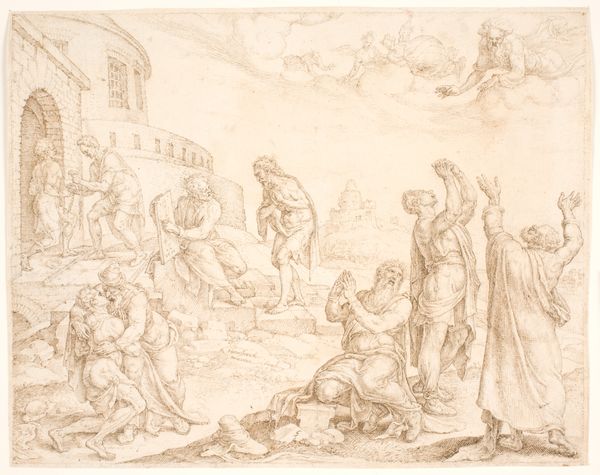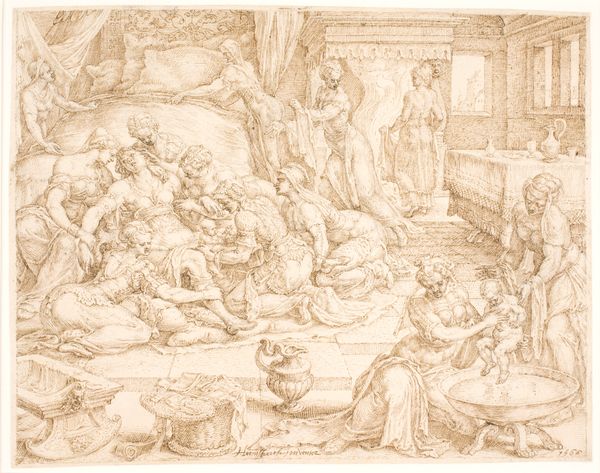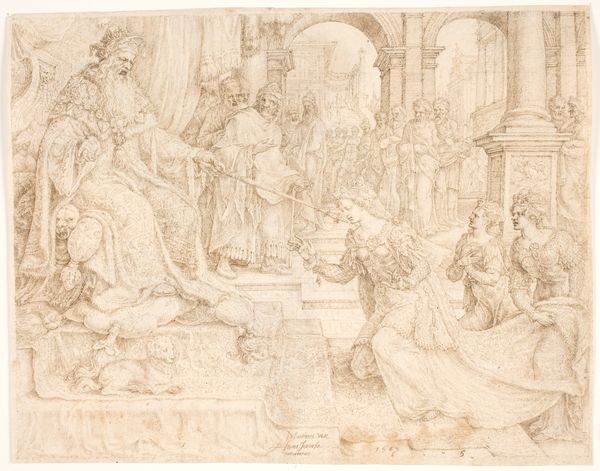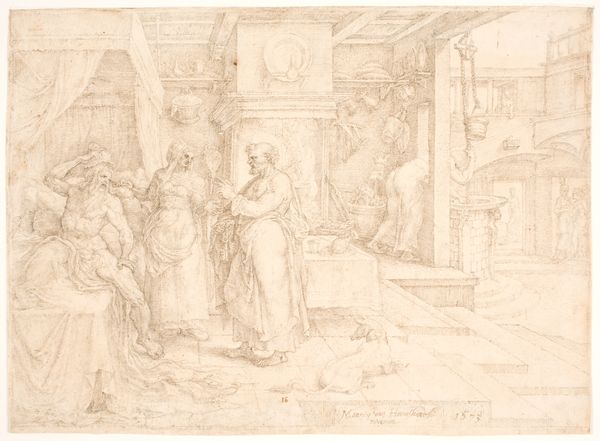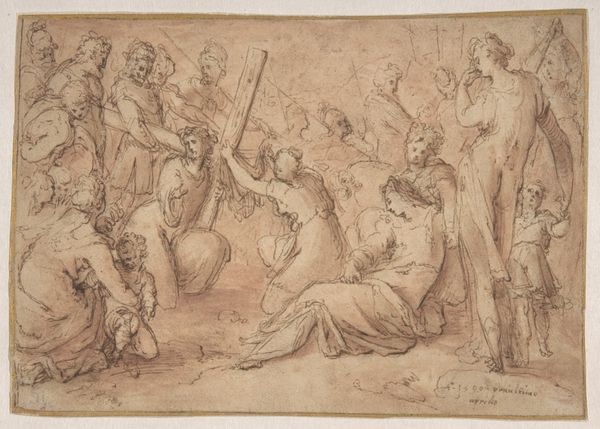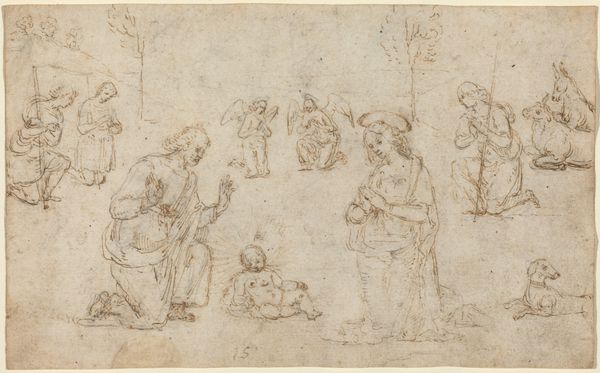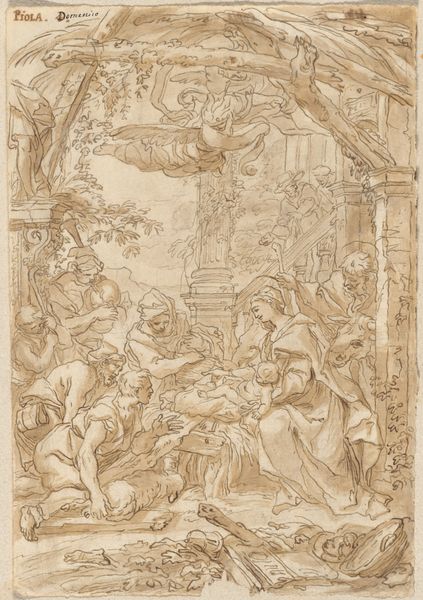
drawing, paper, ink
#
drawing
#
allegory
#
narrative-art
#
ink painting
#
mannerism
#
figuration
#
paper
#
ink
#
history-painting
Dimensions: 229 mm (height) x 300 mm (width) (bladmaal)
Editor: This is "The Garden of Penitence," a drawing in ink on paper by Federico Zuccaro, made sometime between 1540 and 1609. It has an almost dreamlike quality, like a landscape of the mind. How do you interpret this work? Curator: This drawing, rendered in ink, embodies Mannerist sensibilities and really urges us to think about the tumultuous period of religious reform and Counter-Reformation it emerged from. Notice how the figures are elongated, almost distorted, conveying heightened emotion and spiritual turmoil. Zuccaro here gives us not just pretty aesthetics but is offering a window into the anxieties and spiritual reckonings of his time. Can you identify any symbolic elements that stand out to you? Editor: Well, there are figures labelled with words like “Ira” and “Contrition”... they seem like allegories for different states of mind or emotions? Curator: Exactly. Zuccaro masterfully interweaves these allegorical figures to comment on sin, redemption, and the complex path to spiritual cleansing. Look closely: How do you think he's using the setting, the 'garden', to underscore these themes? Editor: It's not a peaceful garden. It looks harsh and unforgiving, mirroring the pain of penitence. Curator: Precisely! This garden challenges the conventional image of paradise, aligning more with a space of self-reflection and struggle. And it reminds us, doesn't it, that even the concept of ‘penitence’ is steeped in the socio-political tensions of its time? What have you noticed? Editor: That context really changes how I see it. I was just taking it at face value, but now it feels so much more layered and critical. Curator: Art is rarely created in a vacuum. By examining its historical context, we reveal deeper levels of meaning, allowing it to speak to us in more profound ways. It really moves us to engage with it on our own terms.
Comments
No comments
Be the first to comment and join the conversation on the ultimate creative platform.
